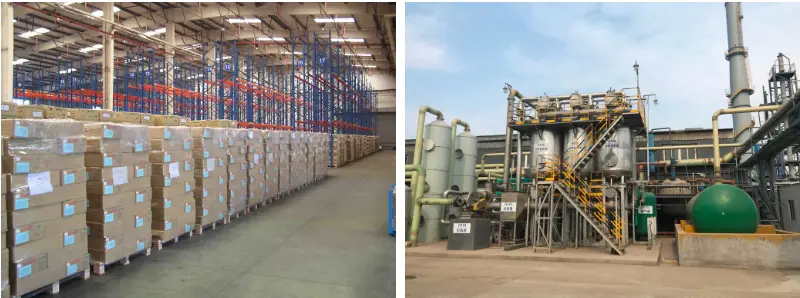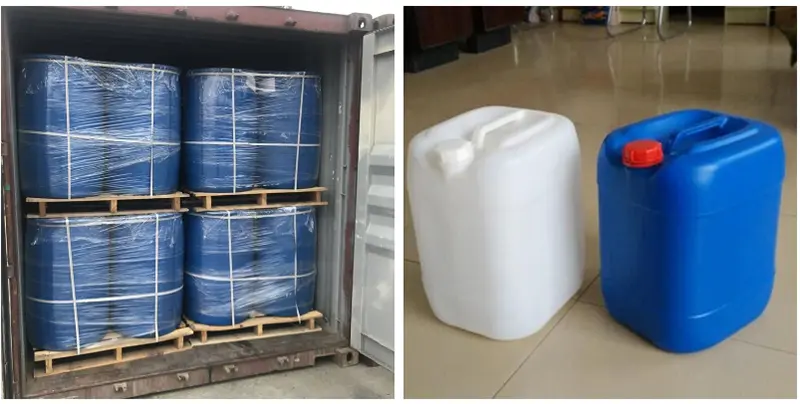P-Phenylenediamine CAS#106-50-3
P-Phenylenediamine CAS#106-50-3 Promotion Season Now in Store and Free Sample for Testing with Factory Price
Chemical Name:P-Phenylenediamine
CAS No.:106-50-3
Molecular Formula:C6H8N2
Molecular weight:108.14
Sample: Available
Mode of Transportation
1. By Air, fast but expensive.
2. By Sea, usual and economy.
3. By Train, suit for middle Asia countries.
4. By Express, suit for small package.
We only provide highest quality goods available, accompanied by after support!
Products Description of P-Phenylenediamine CAS#106-50-3
p-Phenylenediamine, also known as Urs D, is one of the simplest aromatic diamines. The pure product is white to light purple crystals, which turn purple or dark brown when exposed to air. It is slightly soluble in cold water, soluble in ethanol, ether, chloroform and benzene.
It can be used to make azo dyes, high molecular polymers, fur dyes, rubber antioxidants and photo developers. It is mainly used in aramid, azo dyes, sulfur dyes, acid dyes, and can also be used as fur black D, fur blue black DB, fur brown N2, and rubber antioxidants DNP, DOP, MB. It is also used as a raw material for cosmetic hair dye Urs D series, gasoline inhibitors and developers.
As a chemical dye, p-phenylenediamine is currently allowed to be used in the production of hair dyes, but the amount of use is clearly limited. According to my country's "Cosmetic Hygiene Standards", the content of p-phenylenediamine in hair dyes shall not exceed 6%. Experts said that although the p-phenylenediamine content of the five "one-wash black" shampoos ranges from 1.1% to 1.4%, the high frequency of use of shampoo and long-term accumulation can easily threaten the health and safety of consumers. There is no literature to prove whether p-phenylenediamine is a carcinogen; however, there is literature to prove that p-phenylenediamine is an organic toxic substance, as shown in the "Reagent Manual" (Second Edition) published by Shanghai Science and Technology Press in November 1985, page 980. Foreign studies have shown that the incidence of breast cancer, skin cancer, leukemia, and skin cancer will increase in people who dye their hair frequently.
In addition, p-phenylenediamine is also a commonly used sensitive reagent for testing iron and copper. It is also used in aircraft coatings, inner membranes of bulletproof clothing, wall coatings, etc. internationally. The development and production of p-phenylenediamine started early in my country. Before 2003, the main manufacturers were concentrated in Jiangsu and Zhejiang, with a total of more than 20 companies. In 2004, my country's total p-phenylenediamine production capacity was about 13,500 tons/year. Market research shows that p-phenylenediamine is generally in a supply-demand ratio. Since the 1990s, the demand has increased at a rate of 3%-5%. The difficulty in transporting p-phenylenediamine and the pollution caused by its production have limited its production output.
p-Phenylenediamine Chemical Properties
Melting point | 138-143 °C (lit.) |
Boiling point | 267 °C (lit.) |
density | 1.135 g/cm3 (20℃) |
vapor density | 3.7 (vs air) |
vapor pressure | 1.08 mm Hg ( 100 °C) |
refractive index | 1.6339 (estimate) |
Fp | 156 °C |
storage temp. | Store below +30°C. |
solubility | Soluble in alcohol, chloroform, ether and hot benzene. |
Colour Index | 76060 |
form | Powder or Flakes |
pka | 4.17(at 25℃) |
color | White, gray, or purple to brown |
PH Range | NonQ uorescence (3.1) to orange/yellow Q uorescence (4.4) |
PH | 9 (50g/l, H2O, 20℃) |
Water Solubility | 47 g/L (25 ºC) |
Merck | 14,7285 |
BRN | 742029 |
Exposure limits | TLV-TWA 0.1 mg/m3 (ACGIH 1989); TWA skin 0.1 mg/m3 (MSHA and OSHA); IDLH 25 mg/m3 (NIOSH); carcinogenicity: Animal Inadequate Evidence (IARC). . |
Stability: | Stable, but oxidizes when exposed to air. Incompatible with oxidizing agents. Store under inert atmosphere. |
Major Application | Nanoparticles, liquid crystal displays, chemical mechanical polishing, bottom antireflective coatings, electrochromic materials, inks, rubber, hair dyes, cosmetics, treatment of virus skin infection |
InChIKey | CBCKQZAAMUWICA-UHFFFAOYSA-N |
LogP | -0.84 at 20℃ |
CAS DataBase Reference | 106-50-3(CAS DataBase Reference) |
NIST Chemistry Reference | 1,4-Benzenediamine(106-50-3) |
IARC | 3 (Vol. 16, Sup 7) 1987 |
EPA Substance Registry System | p-Phenylenediamine (106-50-3) |
Safety Information
Hazard Codes | T,N,T+,Xn |
Risk Statements | 23/24/25-36-43-50/53-63-36/37/38-45-40-48/22-67-52/53 |
Safety Statements | 28-36/37-45-60-61-28A-24/25-23-53-26 |
RIDADR | UN 1673 6.1/PG 3 |
WGK Germany | 3 |
RTECS | SS8050000 |
F | 8-10-23 |
Autoignition Temperature | 567 °C |
TSCA | Yes |
HazardClass | 6.1 |
PackingGroup | III |
HS Code | 29215119 |
Hazardous Substances Data | 106-50-3(Hazardous Substances Data) |
Toxicity | LD50 in rats (mg/kg): 80 orally, 37 i.p. (Burnett) |
IDLA | 25 mg/m3 |
Product Application of P-Phenylenediamine CAS#106-50-3
It is an important dye intermediate, mainly used in the manufacture of azo dyes and sulfur dyes, and can also be used in the production of fur black D and rubber antioxidant DNP, etc.
Factory and Equipment Show


Fast delivery time
Inventory 2-3 working days New production 7-10 working days








![[1,2,4]TRIAZOLO[1,5-A]PYRIMIDINE-2-CARBOXYLIC ACID CAS#202065-25-6](https://sdluxicdn.huazhi.cloud/cdn/ff/KdifoZ5Y0MHIOY8kOgkDSQB-Ogeme29EEdmGxSRT0ys/1717582769/public/styles/chanp/public/2024-06/photobank%20%282%29_1.jpg?itok=030Mj6jT)
